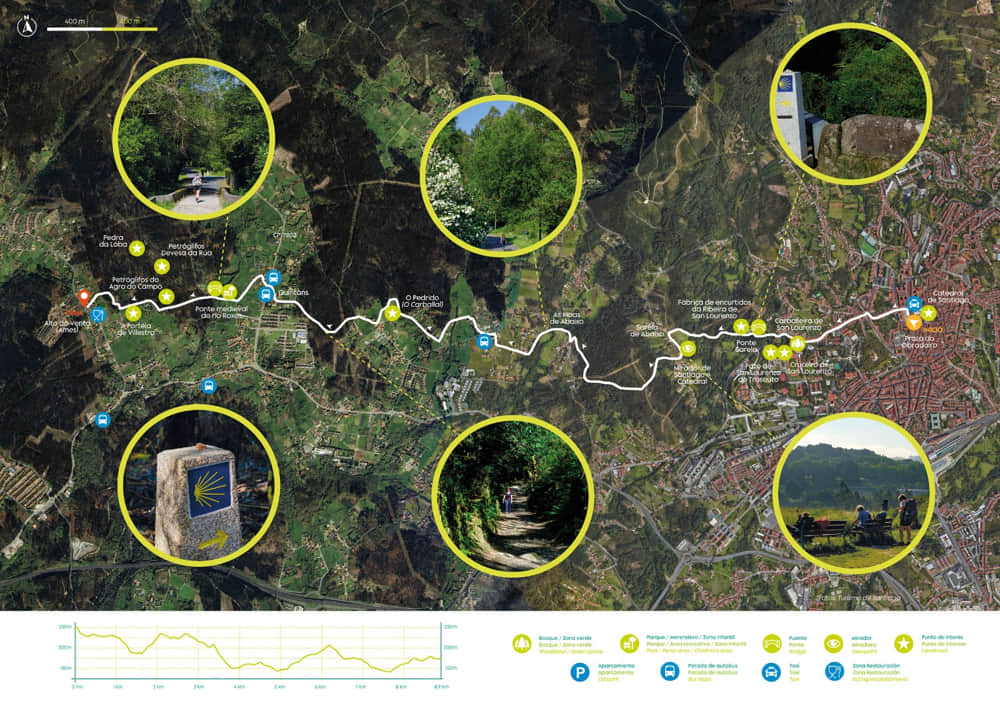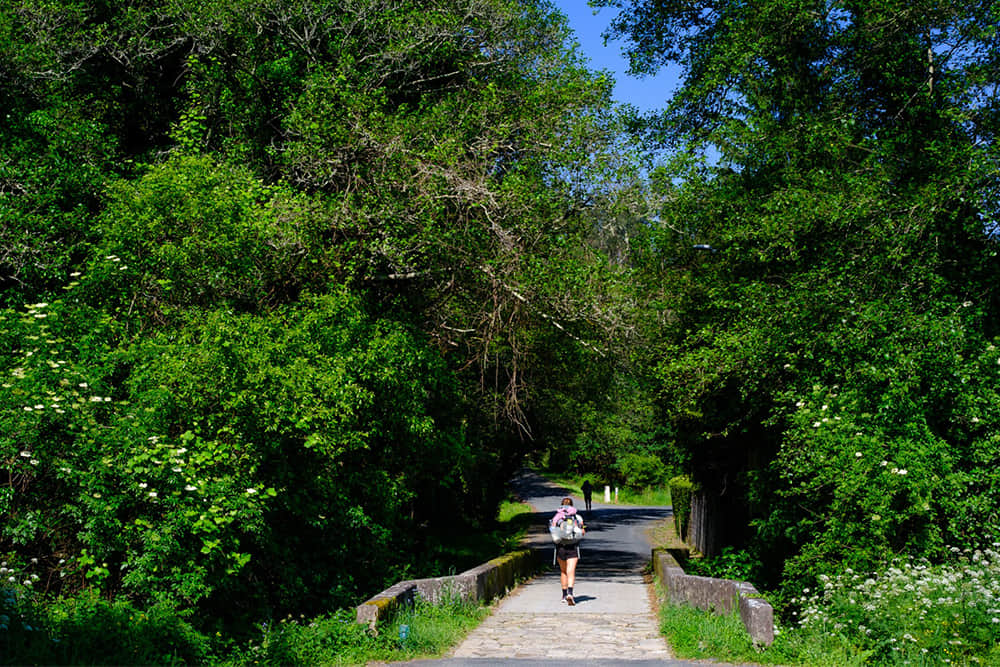The City Council of Santiago de Compostela, through Turismo de Santiago, has presented a new nature trail to decentralize tourist flows and value the natural heritage of the city. With this new addition, there are now 10 routes created by the municipal corporation to explore the surroundings of the Galician capital on foot.
The last trail to be added to this catalog is the municipal section of the Fisterra-Muxía Way, a route of almost 9 kilometers that starts at the emblematic Praza do Obradoiro and ends at Alto do Vento, on the border with the neighboring municipality of Ames.
The route, of low difficulty, has the advantage of being signposted as part of the Caminos de Santiago, which will allow walkers to connect with the phenomenon of the pilgrimage. In addition, its accessibility and connection with public transport make it easy to return to the city center after completing the route.
The ‘Nature Trails of Santiago‘ project has a dual purpose. On the one hand, it seeks to diversify the city’s tourist offer, attracting new segments, such as families, bicycle tourists, people with reduced mobility or hikers. On the other hand, it is proposed as a tool to redistribute tourism, which is largely concentrated in the Cathedral and its surroundings, to less traveled areas, but equally valuable from a landscape and cultural point of view. Thus, the program contributes to a more sustainable tourism model.

The nature trails, which can be covered in a couple of hours or half a day, have been designed to suit all types of public and cover routes of short and medium duration. This new trail is added to the nine existing ones, including the Sarela River and the Forest of Galicia.
You can get the informative brochures of these routes, with maps and detailed descriptions, at the Santiago Tourism office and on its website.
This initiative has been partially funded by a grant from the Diputación de A Coruña, and reinforces Santiago’s commitment to respectful tourism in harmony with its environment.






0 Comments